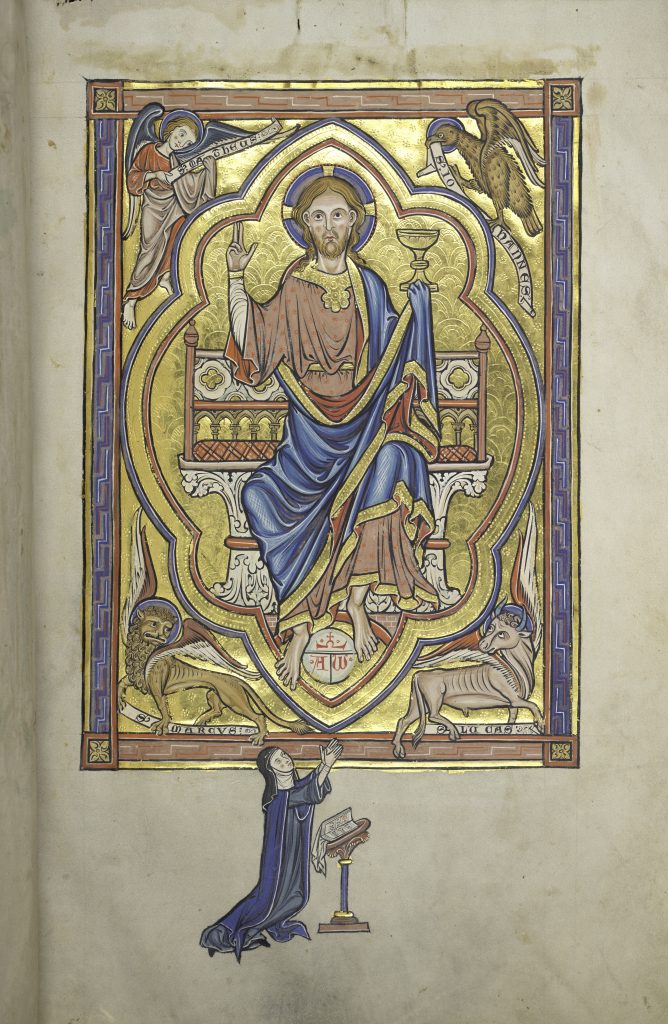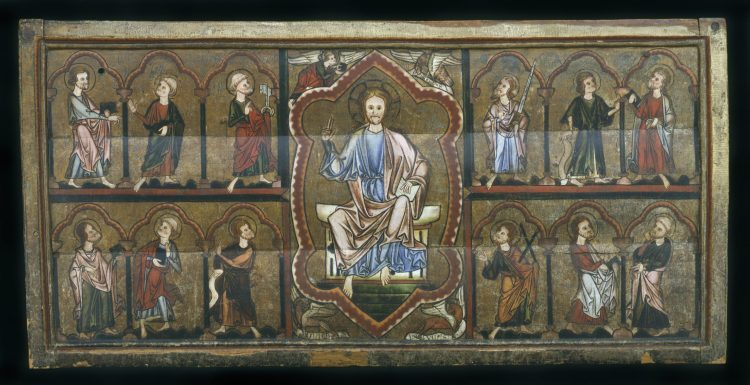Altar frontals served to decorate the front of the altar in medieval churches. Painted wooden frontals were once widespread throughout Europe, but the only surviving concentrations of this object type are now found in Norway and Catalonia. This painted example from the vanished stave church at Ulvik on the Hardangerfjord is one of the oldest of its kind preserved in Norway. It is composed of three horizontal boards set inside a profiled frame. The central section, which fills the panel’s full height, features Christ sitting frontally on a throne with a book in his left hand while he holds his right hand raised in a gesture of blessing. The spandrels around the multi-lobed mandorla feature the symbols of the Four Evangelists: the angel of St Matthew (top left), the eagle of St John (top right), the lion of St Mark (bottom left) and the ox of St Luke (bottom right).
The side sections are divided into two registers and show the twelve apostles in groups of three, each one individually placed under a trefoil arch resting on columns. Three can be recognised by their attributes: St Peter and St Paul in the upper register flanking the central section and St Andrew on the right at the bottom left. The apostles take dynamic poses, and some seem to be in conversation with each other. Here and there a foot peeks out over the painted frame, which reinforces the sense of spaciousness.

The frontal’s iconography corresponds to that of the earliest frontals in Catalonia dating from the twelfth and early thirteenth century: Hix, Esquius, Farrera, all in the Museu Nacional d’Art de Catalunya in Barcelona (inv. nos. 15802, 65502, 15808). Christ and the twelve apostles are also represented on the frontal from Norwegian Heddal, now in the Kulturhistorisk museum in Oslo (inv. no. C34746). The form and style of the frontal from Ulvik show a strong affinity with English thirteenth-century book illumination; the mandorla with four projecting lobes seems virtually copied from the so-called Amesbury Psalter dating from c. 1250 (Oxford, All Souls College, The Codrington Library, MS Lat. 6). Nevertheless, the use of pinewood suggests that the frontal was produced in Norway.
Norway, 1250-1275
From Ulvik (Hardanger), in the museum before 1859
Pinewood, painted
H 94.5 x W 192 x D 4.5 cm
Inv. no. MA 3
